Mainstream superhero continuities encourage readers to remember every step of every journey a character has taken. Marvel’s What If series was one of the first to capitalise on fans’ obsessive attention as a jumping-off point, resulting in stories that ran down wildly unpredictable paths.
Covers for issues of What If whose stories wound up happening in the mainline Marvel Universe.Image: Various Artists (Marvel Comics,)
One of the things that differentiated Marvel Comics’ reinvigorated superhero line after it began in 1961 was structure. Stan Lee and his co-creators wove interconnected stories between single issues and separate titles, peppering them with punchy, personality-filled editorial footnotes.
Reading the Marvel oeuvre of the 1960s was like being part of a boisterous, rolling conversation. It was a sensibility powered by Lee’s braggadocious hucksterism and pumped into house ads, letter columns, and every bit of editorial messaging.
By the time the first issue of the original What If series — meant to explore what could have happened to superheroes had certain in-continuity moments never happened — hit stands in 1977, the feedback loop between Marvel’s readers and creators had been going on for more than 15 years.
The stentorian tones of the Marvel approach and a canon of momentous events had seeped into fans’ pores to create a burgeoning meta-awareness.
As a title, the artwork in What If was merely serviceable and was seemingly hastily often done by rookies or artists in need of more work. When heavyweights like Gil Kane showed up to do stories, the work didn’t always have the same moody hallmarks that made them fan favourites.
But, as a concept, What If serves as evidence that Marvel knew what its storylines meant to its fans. The stories are proof that Marvel was paying attention to the aforementioned feedback loop that went from editorial to fan and back again. Hell, some of its fans were joining its creative ranks and they were likely mining collective speculations for stories.
Take What If #5, for example. It’s a story where Captain America’s wartime junior partner Bucky seemingly doesn’t die. The cover text screams “The Cap story your letters demanded!”
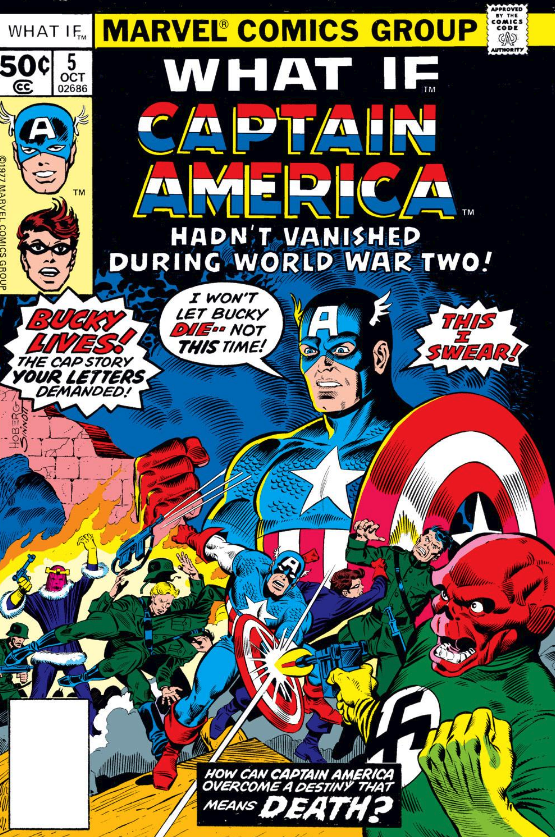
The cover of What If #5.Image: Sal Buscema (Marvel Comics)
Looking at them now, What If #4-5 read a lot like weird fan fiction. In the two stories, writers Don Glut and Roy Thomas meticulously go over old continuity and bend events in odd ways to make rough jokes and clumsy allusions to what happened in mainline Marvel continuity and the real world.
For example, in issue #4, the World War II super-team called the Invaders never disbands after the war and stops a bizarre assassination attempt to kill John F. Kennedy years before he became president. In #5, Steve Rogers defuses the bomb that would otherwise have separated him and Bucky for decades.
The one-time sidekick grows up and uses the nickname Buck, taking on the role of Captain America while Steve goes on to become director of SHIELD. Buck falls in love with Sharon Carter, who later rages at Steve when Captain America falls in the line of duty.
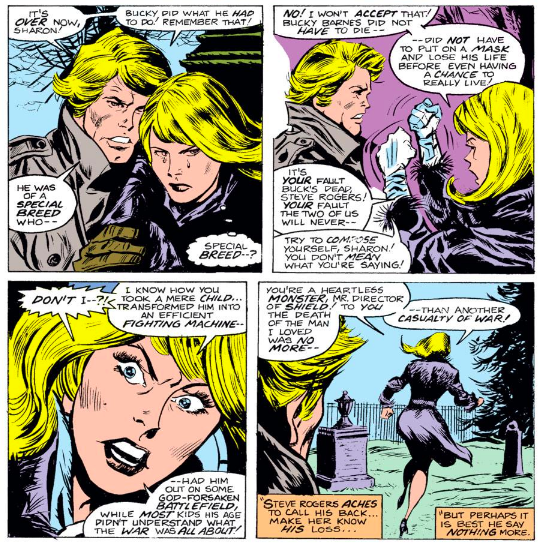
Sharon Rogers blames Steve Rogers for the death of Buck Barnes after his sidekick became Captain America in What If #5.Image: George Tuska, Russ Jones, G. Roussos (Marvel Comics)
Most Marvel comics readers in 2018 know that Bucky did live after World War II, becoming the mind-controlled cyborg assassin called the Winter Soldier and eventually taking on the mantle of Captain America for some time. Later installments of What If wouldn’t be as parsimonious as these Cap-centric issues but they did share one odd trait.
As with Bucky becoming Cap, many of these old-school chapters predicted storylines that would become major canon events decades later. They have different plots, of course, but “What If Jane Foster Found the Hammer of Thor?”, “What If Spider-Man’s Clone Lived?”, “What If Dr. Doom Had Become a Hero” still feel like notional precursors to status quo changes that would happen 30 years after they were published.
On one level, superhero stories operate as wish fulfillment and power fantasies, offering up characters who defy what’s possible in the real world. What If stories went one step further and spun away into another level of fantasy. Things were almost always worse off in these alternate realities, reinforcing the canonical idea that the mainline universe was the way things were supposed to be.
Take “What If Wolverine Had Killed the Hulk?” Logan ending the Hulk’s life sets off a cycle of events in which he kills an innocent man in a blind rage during a bar fight. He goes on the run and eventually falls in with Magneto and the Brotherhood of Evil Mutants. Wolverine gets tasked with infiltrating the X-Men and sabotaging the team so Magneto can win a decisive victory over them once and for all.
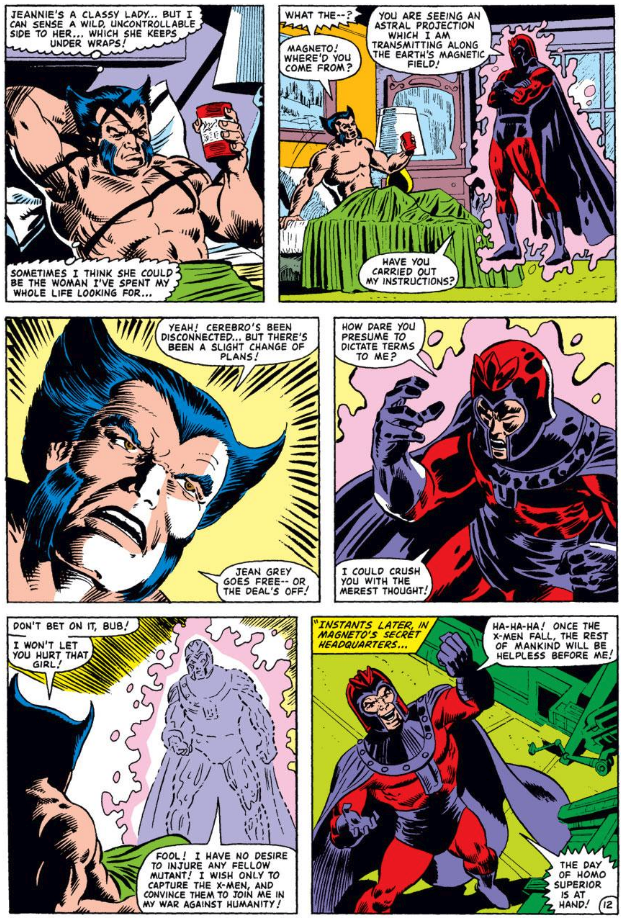
Wolverine demands that Magneto leave Jean Grey unharmed in What If #31.Image: Bob Budiansky, Mike Esposito, Bob Sharen, Karin Nemri (Marvel Comics)
But the story doesn’t ignore Logan’s ever-conflicted nature. He’s not just torn over being a feral, animalistic killer; he also feels guilt over the betrayal of the team that’s accepted him as one of their own. The conflict causes him to change his deal with Magneto, setting the stage for a final battle where the Master of Magnetism makes Wolverine kill himself with his own claws.
Another X-Men-centric story started off by re-writing tragedy. Released mere months after the September 1980 of Uncanny X-Men #137 that saw the death of Jean Grey, “What If Phoenix Had Not Died?” delivered a tale where the founding X-Man didn’t turn an alien weapon on herself and perish.
In this story, Cyclops rallies during the fateful fight against the Shi’ar Imperial Guard on the moon but still loses. Jean is made to undergo a psychic lobotomy which is meant to bury away the Phoenix but also strips away her telepathic and telekinetic powers, turning her into a meek shell of her former self.
But her Phoenix self comes roaring back when the X-Men are on the losing end of a fight with Galactus. She holds her own against the Devourer of Worlds, who leaves the battle with an ominous warning about the cosmic hunger that accompanies godlike power.
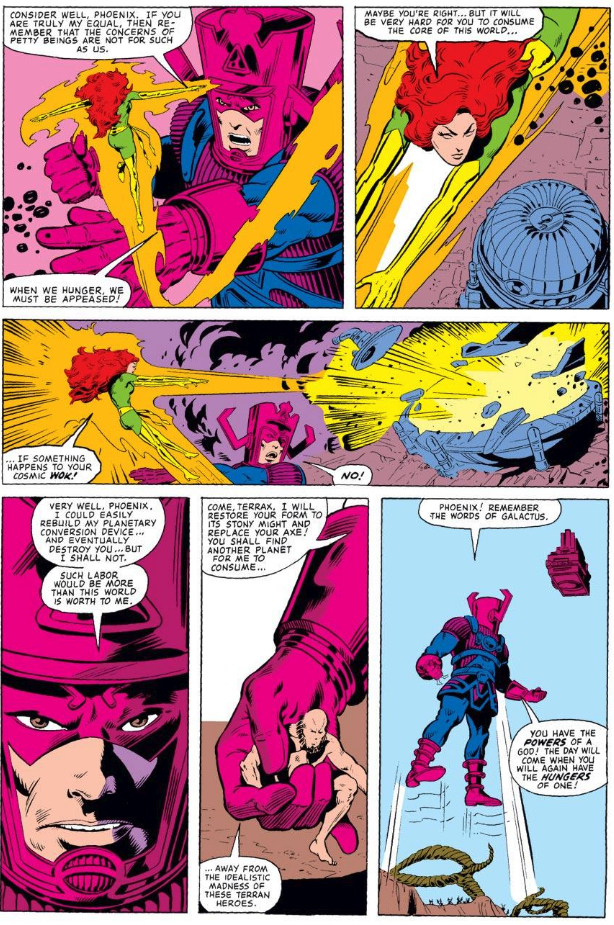
The fight between Phoenix and Galactus has an ominous ending.Image: Jerry Bingham, John Stuart, Carl Garford, Artie Simek, Janice Chiang (Marvel Comics)
That hunger rises in Jean again and, when Kitty Pryde confronts the older woman with the knowledge of her sins, Jean kills her with a blast of fiery energy. All of the other X-Men wind up fighting Phoenix but her cosmic might winds up overwhelming the team and killing Cyclops in the process. Her last ties to humanity gone, the story ends with the Phoenix running rampant and destroying the entire universe.
By and large, classic What If stories took darker turns than the storylines they sprang from. What If #35 — “What If Elektra Had Lived” — subverted that trend with a happy ending. Elektra Natchios is still an assassin in this reality, but the other hired killer who kills her in the canonical continuity dies from a police sniper’s bullet before the job is done.
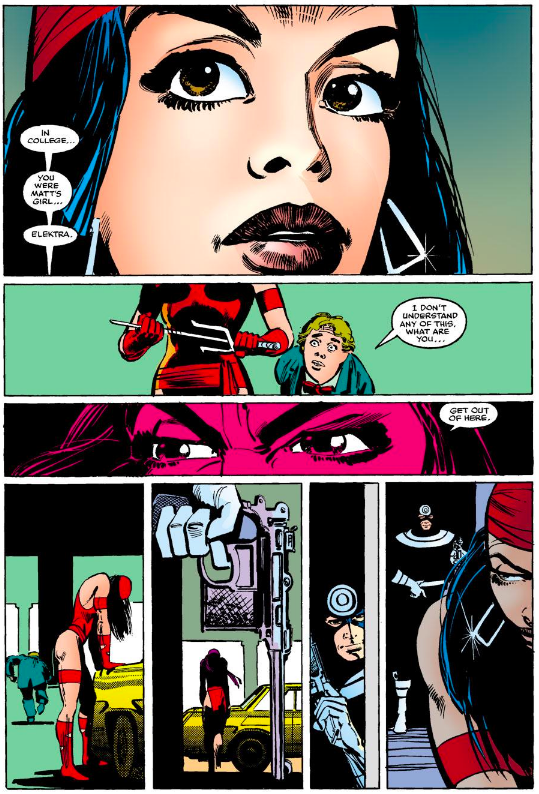
The page right before the moment where Elektra dies in Daredevil #181.Image: Frank Miller, Klaus Janson, Joe Rosen (Marvel Comics)
She then becomes the subject of another assassination contract put out by the Kingpin after she failed to kill Foggy Nelson. Wounded, she goes to ground in Matt Murdock’s (Daredevil) house. When Matt and Elektra reunite, they eventually leave a life of killing and crime-fighting behind.
Writer/artist Frank Miller makes the best of the opportunity to revisit his instant-classic story, using similar page layouts to show the same perspective on wildly different events. If tragedy was canon, then happiness was the flip alternate reality.
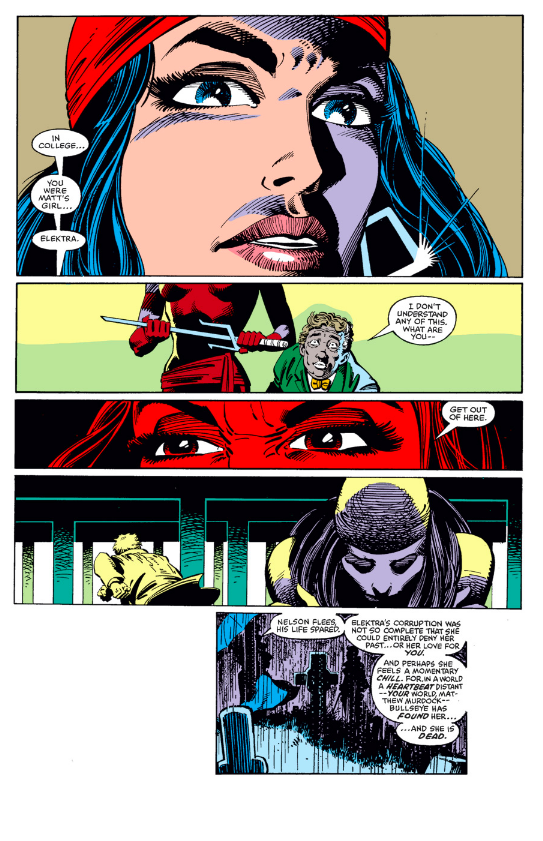
The page right before the moment where Elektra doesn’t die in What If #35. Image: Frank Miller, Terry Austin, Joe Rosen, Glynis Wein (Marvel Comics)
What makes the late ’70s What If experiment even more fascinating is the fact that fans themselves were sending in plot hooks. Their requests were fulfilled with what amounted to horror stories. Looking at one angry reaction to “What If Spider-Man Caught the Man Who Killed Uncle Ben?”, it’s clear that the letters pages for What If lay bare the aforementioned feedback loop and interactions between Marvel editorial and their readers.

You can see a set of rules for sending in What If ideas on the bottom right of this letters page from What If #30. Image: Marvel Comics
Alternate realities in superhero comics predated the divergent sagas spun in Marvel’s What If series. But What If differed from, for example, the imaginary stories that DC Comics used to roll out for characters like Superman and Batman.
Those imaginary stories were usually done-in-one, whole-cloth constructions with their own beginnings, middles, and ends. The events leading up to occurrences like, say, Superman marrying mermaid girlfriend Lori Lemaris all happened in the universe of that story. What If riffs on readers’ collective memory and is stronger for it.
These comics represent a dialogue between creators and enthusiasts, a dialectic between execution and desire. The classic What If series gave readers what they said they wanted, in counter-intuitive packages that interrogated and manipulated their relationship to Marvel’s publishing history.
It was a series that asked questions and offered apocryphal answers, answers that wound up both reinforcing the idea of a canon set in stone and allowing for the existence of worlds where an entirely different canon was happening. What If was one of the first places the Marvel Comics universe successfully expanded, opening up the door for the kinds of re-interpretation that fans would thrill to in future movies, TV shows, and video games.
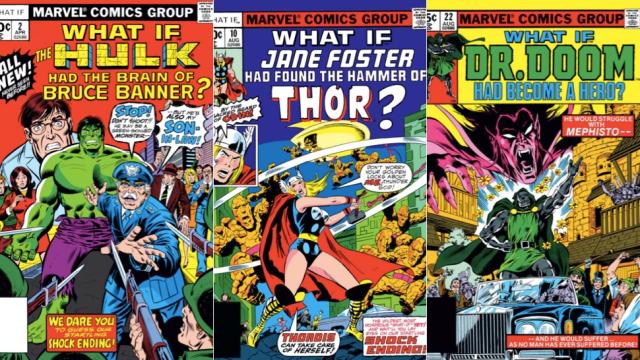
Comments
7 responses to “The Secret Beauty Of Marvel’s What If Comics”
My favourites were ‘What If Spider-Man Married Black Cat?’, ‘What If Wolverine Killed Weapon X?’ and the darker, horror-themed reboot ‘What If…? Starring Sabretooth’
But what if Rick James became The Hulk?
Gamma radiation is a hell of a drug.
I love Marvel’s What If books.
Some of my faves were “What If Wolverine Was Lord of the Vampires?”, “What If the X-Men Lost Inferno?”, “What If Dazzler Had Become the Herald of Galactus?”, the Children in the Attic-inspired issue starring Rogue & Nightcrawler, the New York New Savage Land issue starring Ka-Zar and the last issue of the 2nd series featuring Secret Wars: 25 Years Later.
They need to do a new ongoing What If series already!
Modern version would be WHAT IF… The DC movies were as good as Marvel… :p
Yeh loved this series when I was a kid. I had one that I constantly reread and think I still have it somewhere…
Think it was What if magneto took over the u.s.a. ? Dunno but it was very dark, very cool.
I hope you cover the “What The” comics next 🙂
I enjoyed the What If’s from Marvel but I actually preferred the Elseworlds from DC. I feel like the What If’s were (usually) low effort throw aways whereas the Elseworlds books actually seemed like a serious attempt at an interested story. Stuff like Superman: Red Son or Batman: The Doom that came to Gotham are fantastic. And Kingdom Come is the daddy of them all.